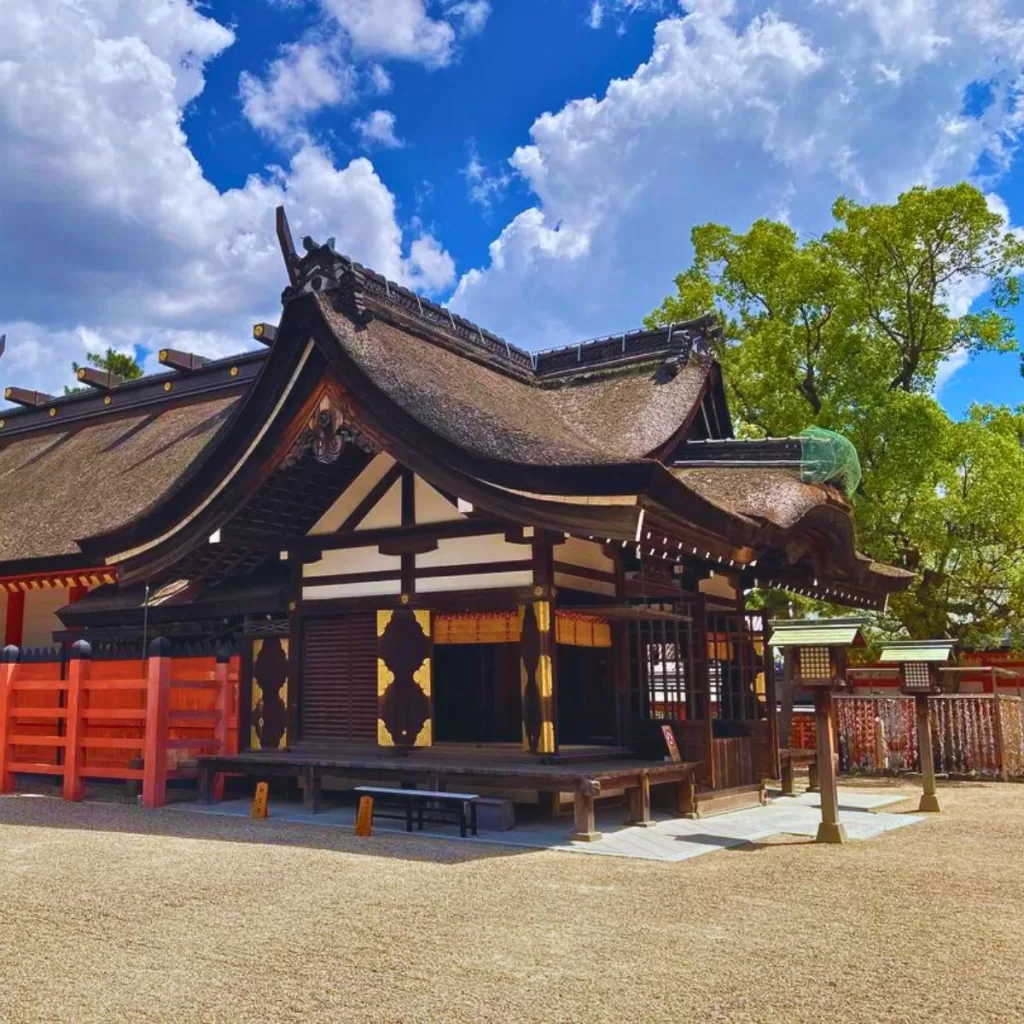Sumiyoshi Taisha Shrine: Ancient Shinto Shrine in Osaka
Sumiyoshi Taisha Shrine – The Heart of Shinto
Sumiyoshi Taisha Shrine is located in southern Osaka, near the Sumiyoshi Taisha station on the Nankai main line. Often referred to as an eminent “grand shrine,” it holds a high place of honor as one of the oldest shrines in Japan. This hallowed site was founded in the 3rd century, marking it as one of Japan’s oldest shrines, even predating the arrival of Buddhism.
The shrine serves as the head shrine for all Sumiyoshi shrines across Japan. It comprises approximately 2,000 Shinto institutions dedicated to the Sumiyoshi Okami, deities revered largely by sailors for their power over sea and storms. These deities are also known for providing blessings in poetry, agriculture, and warfare.

Unique Architecture of Sumiyoshi Taisha Shrine
Sumiyoshi Taisha Shrine is renowned for its unique style and sets a perfect example of ancient Sumiyoshi-zukuri architecture. It defies typical architectural norms derived from Buddhist influence or other influences from the Asian mainland during its time. This prolific shrine adopts a purely Japanese style called Sumiyoshi-zukuri, distinguishing it from two other styles seen at Izumo Taisha and Ise shrines, which are also considered purely Japanese.
The four main buildings of this old shrine mirroring this ancient style have been given status as a National Treasure. Structures built in this fashion have straight roofs as opposed to curved roofs commonly built in later centuries, decorated by two sets of forked finials. They possess their entrance under the roof and are surrounded by a fence – attributes evocative of Sumiyoshi-zukuri architecture.
Sumiyoshi shrines enshrine tertiary deities to whom few historic structures remain dedicated. Thus, seeing one amongst the dense urban landscapes of central Osaka makes it quite iconic among tourists.
Highlights near Sumiyoshi Taisha Shrine
Around Sumiyoshi Taisha Shrine lay several attractive sites within Osaka City, enriching its surrounding landscape and history.
A visit to this popular shrine is not just about appreciating its distinctive architecture but also admiring several special aspects within and near this sprawling expanse. As one approaches the expansive grounds of Sumiyoshi Taisha, one encounters a beautiful arched bridge at its entrance known as Sorihashi. Locals refer to it affectionately as “Taiko-bashi” or Drum Bridge owing to its spectacular drum-like reflection that emerges in the pond underneath.
Close by Sumiyoshi Taisha is the bustling district of Tennoji and Namba – notable mentions among destinations in Kansai that mix culture, commerce, and gastronomy.
Namba station links you seamlessly with multiple avenues, revealing traditional art theatres like Bunraku Theatre or shopping alleys like Shinsaibashi-suji. Delicious food explorations can lead you onto Dotonbori with an exhilarating street food profile amidst vibrant billboards.
Tennoji marks its place emphatically on Osaka’s map with attractions like Tsutenkaku Tower, which provides panoramic city views, or Tennoji Park, which features artistic modern landscaping blended with historical significance.

Encapsulating Cultural Significance
This important Shinto shrine is famous throughout Japan for Hatsumode – a significant cultural tradition respecting the first shrine visit at the start of each New Year. This event attracts many individuals keen on receiving divine blessings for a prosperous year ahead.
On specific festive days like New Year’s or during periodic events such as the Sumiyoshi Matsuri festival held each July, locals come attired traditionally, creating picturesque scenes that stir nostalgia into modern city life.
Traditions narrate that Empress Jingu, who established Sumiyoshi Grand Shrine, had returned successfully from her expedition to Korea in the 3rd century, dedicating her victorious legacy to these sacred grounds, making it sacred for locals beyond time.
Sumiyoshi Taisha remains timeless through its distinct architecture etching punctuations in Osaka’s remarkable skyline while enchanting countless hearts through deep-rooted cultural narratives offering immersive experiences steeped into heritage and customs lasting hundreds of years past till date – making a pilgrimage here utterly awe-inspiring.